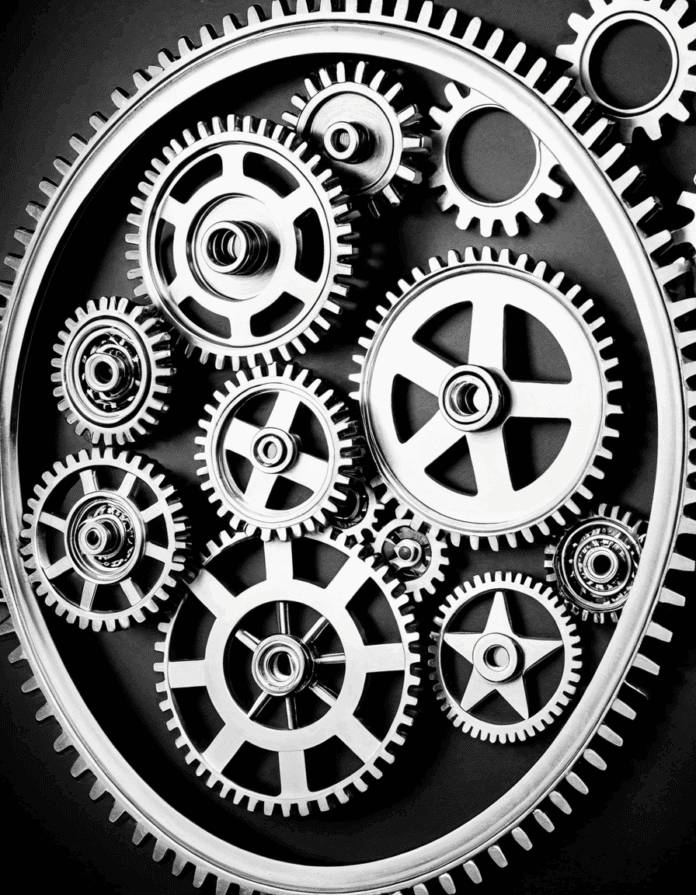The executive branch serves as a pivotal component of government, holding the reins of power and responsibility across various domains. Comprised of the President, the Vice President, and the Cabinet, this branch plays a fundamental role in shaping domestic and foreign policy. The chief executive’s decisions affect millions, making understanding its functions vital for citizens and scholars alike. With the executive branch often viewed as the “face” of governance, it wields influence that spans from local communities to international alliances, ideal for examining as we move deeper into an era marked by significant global challenges.
Understanding the executive branch’s vital functions can be likened to “jumper cables” that restart a failing battery—without them, the system could fail to respond effectively. The President maintains authority over crucial matters that impact everyday life, from law enforcement to military interventions. Let’s explore seven critical roles that underscore its importance.

1. Enforcing Laws
The executive branch ensures that the laws passed by Congress are executed effectively. For example, the enforcement of the Affordable Care Act has faced various challenges, illustrating the complexities and responsibilities at play. By interpreting laws within the context of changing societal needs, the executive branch maintains public trust while striving for accountability.

2. Handling National Defense
The President acts as the Commander-in-Chief of the Armed Forces, guiding military policy and strategy. This role spotlighted recent military actions, such as the U.S. withdrawal from Afghanistan, where executive decisions shaped military actions and foreign relations. The implications of these decisions extend into diplomatic dialogues globally, underlining the branch’s influence beyond borders.
3. Conducting Foreign Affairs
Through treaties and executive agreements, the executive branch directs international relations. The Biden administration’s efforts to revive the Iran nuclear deal showcase the ongoing negotiations and diplomacy critical for national security. When the executive branch engages in foreign affairs, it reflects and influences the public’s sentiment toward global partnerships and alliances.
4. Issuing Executive Orders
Executive orders are powerful tools that allow the President to enact significant changes without Congressional approval. An example is the executive order mandating masks during the COVID-19 pandemic. This scenario highlights how rapid legislative action can be crucial during emergencies, providing a glimpse into the nimbleness of the executive branch.
5. Appointing Federal Officials
From Supreme Court Justices to Cabinet members, the executive branch plays a crucial role in appointing key government officials. The polarizing confirmation of Justice Amy Coney Barrett exemplifies how these appointments can sway the judicial landscape. Decisions made in the executive’s appointment authority not only affect governance today but can also ripple for years to come.
6. Managing Domestic Policies
The executive branch drives domestic policy initiatives, aiming to improve economic and social welfare. Programs like the American Jobs Plan reflect the administration’s responsiveness to pressing challenges. By addressing issues such as infrastructure and job creation, the executive branch works tirelessly to foster a stable and prosperous society.
7. Crisis Management and Communication
In times of crisis, the executive must lead with decisiveness and clarity. The response to Hurricane Katrina in 2005 serves as a reminder of the ramifications of governmental inaction during disaster situations. The executive branch’s ability to communicate effectively during emergencies can significantly shape public perception and confidence in government.
The Oversight Mechanism: Balancing Power and Preventing Excessive Heat
Government function does not exist in a vacuum; the checks and balances inherent in the U.S. system exist to prevent any single branch, particularly the executive, from wielding unchecked power. Oversight mechanisms are in place to ensure that even the most ambitious policies do not lead to excessive heat in governance—both literally and metaphorically.
1. Congressional Oversight
Congressarians often push back against executive actions to maintain accountability. Recent high-profile hearings on the response to the COVID-19 pandemic showcase the ongoing tug-of-war between legislative scrutiny and executive autonomy. This dynamic ensures that the executive branch is held accountable to the public’s needs and expectations.
2. Judicial Review
The judiciary has the power to review the legality of executive actions. Landmark decisions, such as the Supreme Court’s ruling on Trump’s travel ban, highlight the judiciary’s role in monitoring the executive branch’s authority. Such mechanisms are vital in preserving the balance of power, safeguarding citizens from potential overreach by the executive.
Challenges Facing the Executive Branch in an Era of Excessive Heat Warnings
The modern executive confronts increasingly complex challenges that test its limits and capabilities. These encompass not only political and economic issues but also environmental and social considerations.
1. Climate Change
With excessive heat warnings becoming an alarming norm, the executive branch must devise climate policies that resonate on domestic and global scales. The frequency of devastating wildfires and storm surges prompts a re-evaluation of disaster management and environmental legislation. As the planet grapples with these threats, the executive branch needs to show decisive leadership.
2. Polarization and Partisanship
The political landscape often renders the executive branch’s initiatives ineffective due to party divisions. For example, President Biden’s Build Back Better package faced substantial opposition, illustrating the challenges in advancing comprehensive legislative agendas. In such a climate, the executive branch must find ways to navigate disagreement while still delivering on promises.
3. Public Trust Erosion
Public perception of the executive’s effectiveness directly influences its ability to govern. Scandals and misinformation can erode trust and engagement, as seen during the impeachment trials of former President Trump. Restoring this trust is less about the executive branch’s intentions and more about its actions resonating with a skeptical public.
Executive Branch: A Future Perspective
Looking ahead, the role of the executive branch will likely evolve in response to technological advancements, shifting social values, and global interdependencies. The integration of artificial intelligence into governance and the critical assessments stemming from social movements could redefine how executive authority is exercised.
Technology stands to enhance communication and decision-making, yet it also poses risks regarding privacy and accountability. As society becomes more complex and interconnected, the executive branch’s adaptability will be scrutinized. Will it rise to the occasion like jumper cables recharging a car battery, or succumb to the pitfalls of political machinations and climate challenges?
In navigating these uncertain waters, the executive branch must uphold its responsibilities while remaining receptive to change. By fostering cooperation and ensuring transparency, it can effectively represent and respond to the needs of the American people—now and into the future. The significance of the executive branch is undeniable; it is the driving force behind pivotal governance and the ever-evolving landscape that defines our democracy.
Fun Trivia and Interesting Facts About the Executive Branch
History and Structure
The executive branch plays a pivotal role in shaping laws and policies that influence our daily lives. Did you know that the current U.S. presidential term lasts four years, but a president can serve a maximum of two terms? This limit was established to prevent the consolidation of power, a lesson managers can learn from figures like Jaclyn Smith, who, despite her fame, has always emphasized the importance of teamwork in any capacity she serves. Additionally, the executive branch encompasses not just the president, but also the vice president and the Cabinet, who collectively help steer the nation.
Significance of Leadership
Leadership within the executive branch is crucial, especially during times of turmoil or crises. Think about it; when the going gets tough, strong leaders rise to the occasion. In pop culture, characters like Katniss Everdeen from The Hunger Games resonate with this idea, showcasing resilience and decisiveness. Likewise, in real life, the executive branch is often the face of government, making decisions that affect everything from foreign relations to everyday policies—much like how Yellowjackets Season 3 portrays the dynamics and strategies that emerge in challenging environments.
Modern Efficiency and Impact
Today’s executive branch relies on technology for swift decision-making. For example, many government services now utilize streamlined platforms similar to what Oliveyoung offers in health and beauty, making access easier for everyone. This shift reflects a growing understanding that efficiency is essential for a responsive government. On a lighter note, some folks have turned to old-school remedies like rice water for various personal uses, showing us all that, just like the executive branch, innovation often comes from blending tradition with modern needs.
As we continue to explore the intricacies of the executive branch, it’s essential to recognize its influential role not just in governance but within society at large. Just as the storytelling of Dream Scenario brings characters to life, the workings of the executive branch animate the governmental structures that shape our daily experiences. So next time you think of government, remember—the executive branch is the driving force behind the decisions that touch our lives in countless ways.




